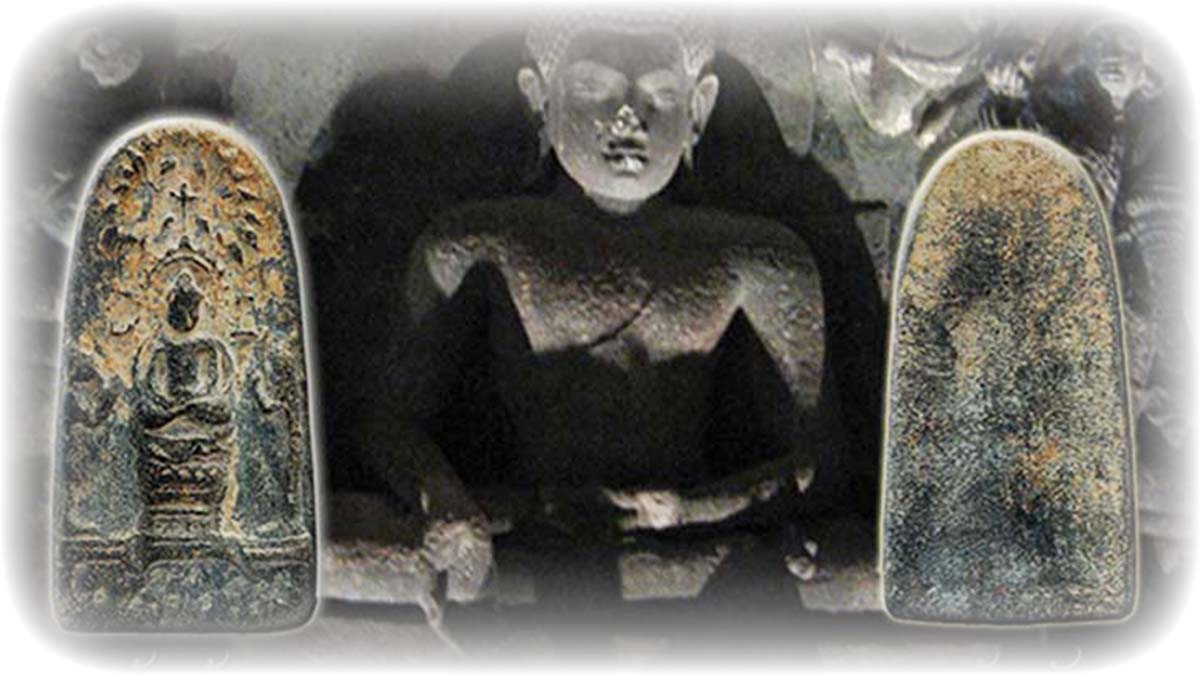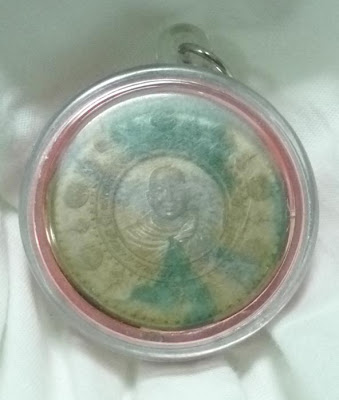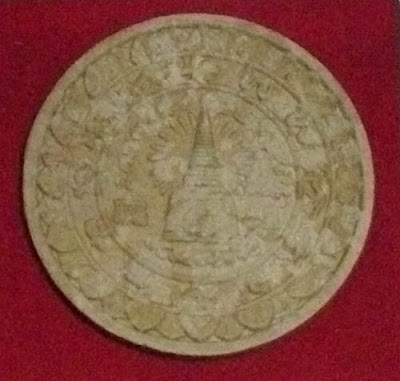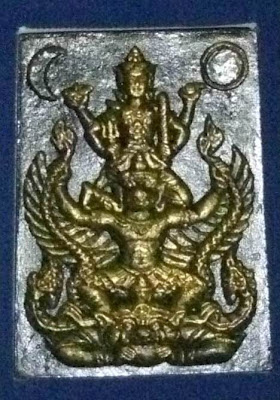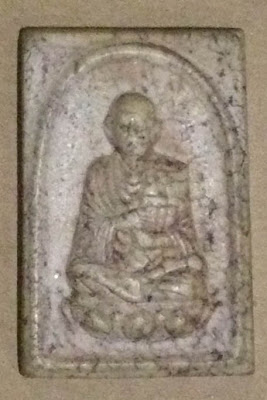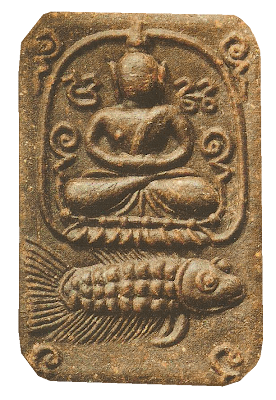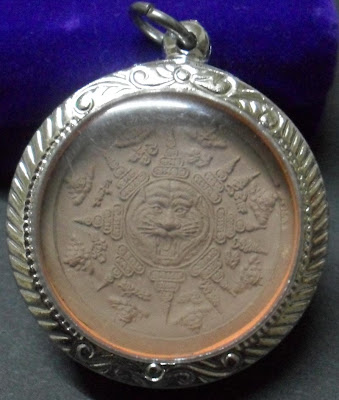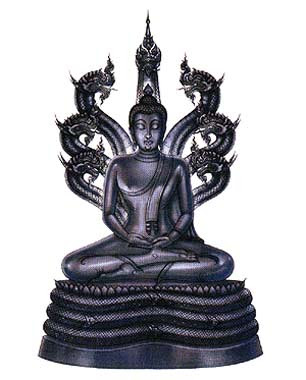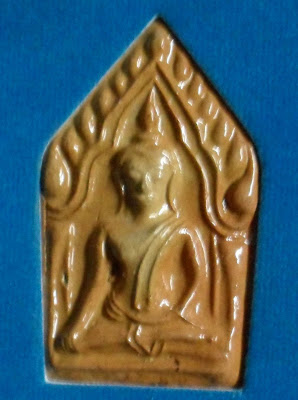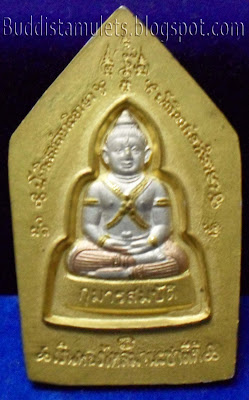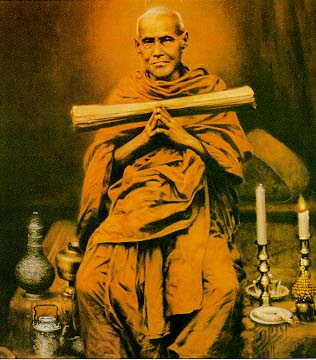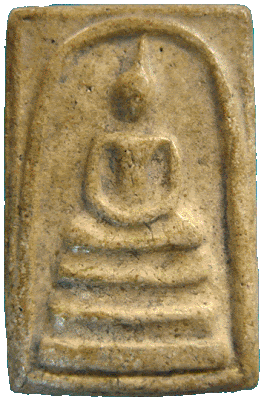Tiger Face Kong Grapan/Amnaj Amulet
 Rental price for this amulet -
Rental price for this amulet - This is a "Kong Grapan Chadtri" amulet (protection against physical harm, invincibility) made bt Hlwong Por Jamnian, the abbot of Wat Tam Suea in Krabi, South Thailand. Wat tam Suea is also known as the "Tiger Temple" because of the tiger cave there. This temple was originally a place where Bhikkhus (monks) would stay to practise in the cave and surrounding Jungle - because of the faith instilling practise of the monks, the place slowly became famous and a place of reverence. The great number of sacred shrines, relics and places of worship here adds to the sacredness of this amulet when you consider the amount of Dhamma being practised here

The temple then developed naturally until it became the world famous place it is today. LP Jamnian is renowned for his Dhamma teachings and travels around the world to the many "samnak" (centres) he has in many western countries, teaching the Dhamma. His amulets are considered very powerful. The temple is now in a further stage of develpment with the building of a massive Chedi spire (Stupa) which is so high that you can see it from many miles away. The temple has a giant Buddha statue (see pics at bottom of this post), on the top of the mountain which the temple is shadowed by, visible from up to 40 kilometres away. The stairs leading up to the top have 1200 steps to get there!
You can make merit at the temple by renting a collection of Nine Amulets with nine famous geji Ajarn master monks on them, but you dont get to keep the amulets; they are inserted in trays layer upon layer inside the giant stupa which will have i believe 999,999 amulets inside when it is finished.

These amulets have a special unbreakable cement mixture you can throw one at the wall and it will not break! I personally met the maker of the amulets and he gave me the recipe which i was honored to recieve. This is his secret tecipe and i have to keep it sevret. He gave it to me because he knows of my plan to make amulets in the future when i have collected all the necessary sacred ingredients for it. This Tiger amulet from Wat tam Suea is now out of stock in the temple and there are no more left. I have only one example, which is the one you see here.
The rear side of the amulet has the image of LP Jamnian on it surrounded by sacred Khmer Agkhara letters, sacred Unalome spires and the famous "Yant Gao Metta" of LP Jamnian.
Yant Gao Metta is a spiral with nine rings to it - Gao meaning "Nine" and Metta meaning "Loving Kindness and compassion" - this increases the charm factor of the amulet making it useful both for protection and lucky charm and fortune. Nine is a sacred and lucky number in Buddhism. The goldd painted tiger face on the front has the number nine inscribed on its tongue too, which will give the power of "lin tong" (golden tongue) - Gonden Tongue means that you will be a good salesperson and convincing in your sales pitch.
The temple has many Chinese descended devotees and the temple grounds have several shrines which are specifically built for the Chinese manner of devotional practise


The temple has many opportunities of practising dhamma and dhamma retreats - and provides a host of different nooks and crannies where you can find a place to sit and meditate, and practise.
There is also a shrine with Buddha relics to worship - i myself did this and felt a very powerful and pure energy emitting from the Shrine.
Below pic; Relic Shrine
You can contact me on sakyant at windowslive dot com or fone 98323062 (Singapore) if you wish to rent these amulets. Or go to the new online shop at Siam Amulets Online Siam Amulets Online
The Buddha statue on Mount Khao Gaew at Wat tam Suea;
Below pic; Buddha footprint on the Khao Gaew mountain at wat tam suea where the Buddha statue sits
Dhamma practise and reverence on the mountain top



Video of Wat tam Suea
This is a beautiful place to visit if you are in krabi - the mountains around the temple are so beautiful, as you can see in the short clip below which is taken from the top of the mountain where the Buddha statue is in Wat Tam Suea
